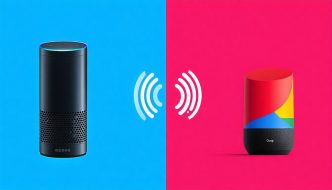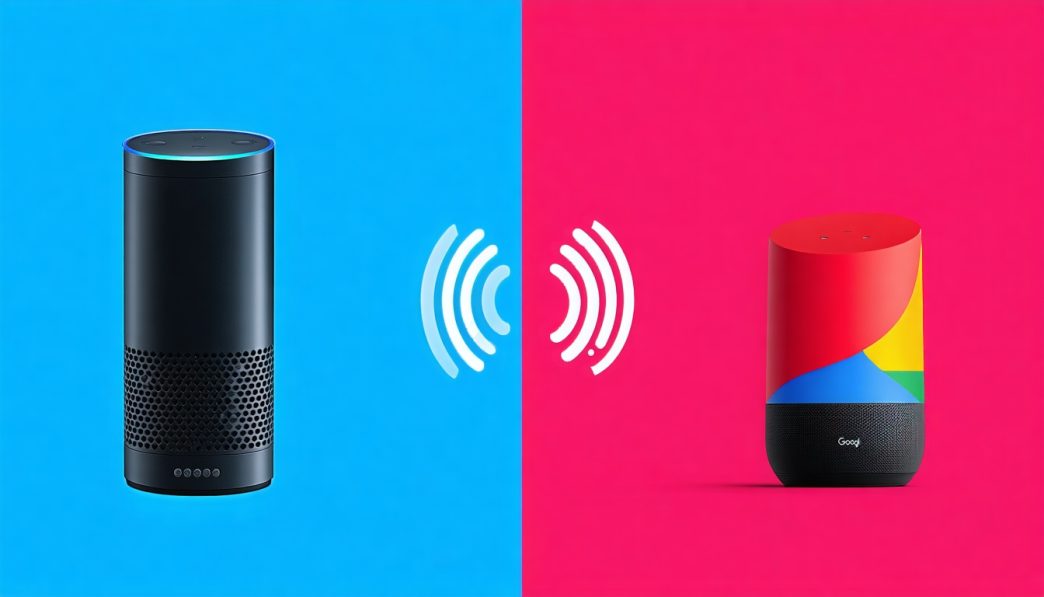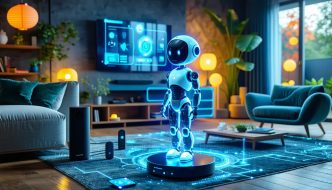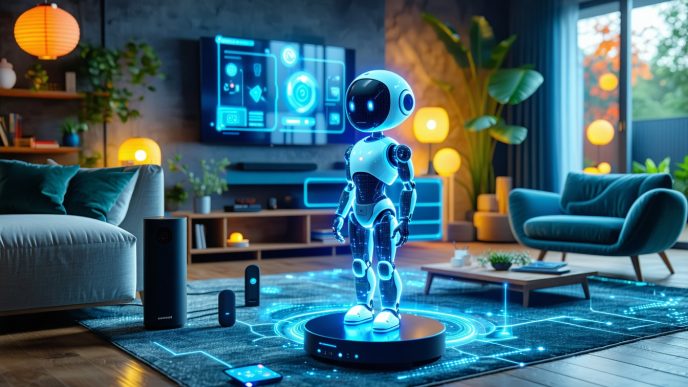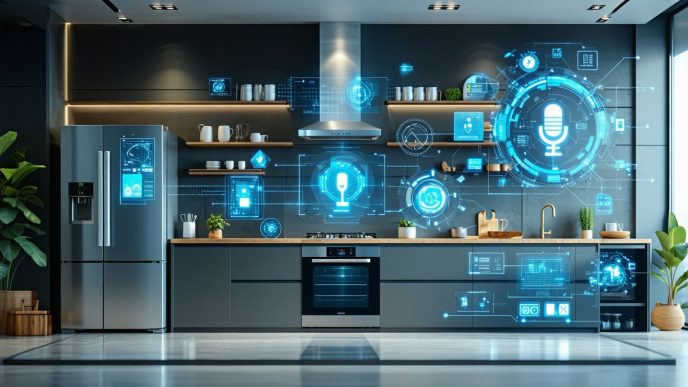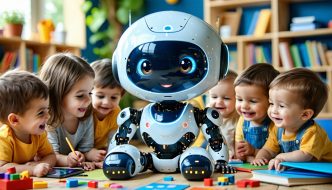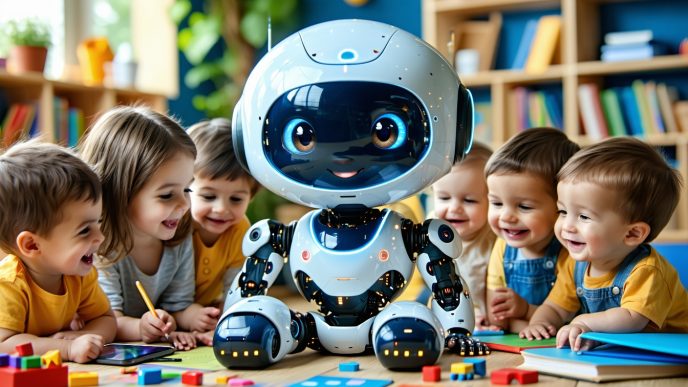The Evolution of AI Assistants
Importance of AI Assistants
AI assistants have become integral in modern society, providing users with convenience and efficiency in their daily tasks. These digital interfaces enhance productivity by managing schedules, controlling smart home devices, and answering queries. Understanding the significance of AI assistants is essential for smart home adopters, tech-savvy families, and professionals seeking seamless interactions across their environments.
According to a recent survey, the majority of users find AI assistants beneficial in various areas of life, including:
| Area of Use | Percentage of Users (%) |
|---|---|
| Home Automation | 45 |
| Scheduling | 35 |
| Information Retrieval | 40 |
| Entertainment Control | 30 |
This data reflects the growing reliance on AI assistants for simplifying everyday tasks, making them important tools in managing both personal and professional aspects of life.
Growth and Advancements in AI Technology
The growth of AI technology has been pivotal in the evolution of AI assistants. Innovations in machine learning and natural language processing have significantly enhanced the capabilities of these systems. Advancements allow AI assistants to better understand user queries, respond more accurately, and provide personalized experiences.
Recent advancements include:
-
Natural Language Processing (NLP): Improved algorithms have allowed AI assistants to better understand context and subtleties in language, making conversations more fluid. For a deeper exploration, visit our section on voice powered robots.
-
Machine Learning Algorithms: These algorithms enable AI assistants to learn from user interactions, allowing for continuous improvement of responses and suggestions.
-
Integration with Smart Home Devices: AI assistants are increasingly integrated with various smart home products, empowering users to manage their home environments efficiently. For more details, see our article on ai assistants and smart homes.
Overall, the advancements in AI technology have laid a strong foundation for future innovations in AI assistants, continuing to enhance their functionalities and effectiveness in daily life.
Alexa’s Intelligence
As one of the leading AI assistants on the market, Alexa showcases a range of features that appeal to tech-savvy families and professionals. This section outlines the strengths and limitations of Alexa.
Strengths of Alexa
Alexa’s strengths lie in its versatility and integration capabilities. Users can leverage its functionalities in various ways, enhancing their smart home experience. Key strengths include:
| Strength | Description |
|---|---|
| Voice Recognition | Alexa excels at understanding diverse accents and speech patterns, making it accessible for many users. |
| Smart Home Integration | With compatibility across numerous smart devices, Alexa enables seamless control of home automation, enhancing user convenience. For more information, see our article on ai assistants and smart homes. |
| Skill Development | Alexa supports thousands of third-party skills, extending its capabilities beyond basic functions. This allows for tailored experiences based on user preferences. |
| Routine Automation | Users can set up routines that trigger multiple actions with a single command, streamlining daily tasks. |
Limitations of Alexa
Despite its advantages, Alexa also has limitations that may hinder its performance. Understanding these drawbacks is essential for users considering their options in the alexa vs google assistant debate. Some limitations include:
| Limitation | Description |
|---|---|
| Contextual Understanding | While Alexa can follow many commands, it occasionally struggles with context, requiring more explicit instructions. |
| Limited Geographic Functionality | Alexa’s features can vary by location, restricting certain functionalities for users in different regions. |
| Privacy Concerns | Users often express concerns about data privacy and security in relation to voice-activated devices. For further insights, refer to our article on privacy and ai assistants. |
| Dependence on Internet | Alexa requires a constant internet connection to function, limiting its usability in areas with poor connectivity. |
By recognizing both the strengths and limitations of Alexa, users can make informed decisions about their AI assistant choices. For additional insights on AI assistants, consider exploring our articles on ai assistants and ai assistant use cases.
Google Assistant’s Intelligence
Google Assistant is a leading AI assistant known for its advanced capabilities and seamless integration with various services. This section will explore the strengths and limitations of Google Assistant, offering insights into its functionality.
Strengths of Google Assistant
Google Assistant excels in several areas that make it a powerful tool for users. One of its key strengths is its ability to leverage Google’s extensive search engine capabilities. This allows it to provide accurate and relevant information in response to a wide range of queries.
Some notable strengths include:
| Feature | Description |
|---|---|
| Knowledge Base | Access to a vast amount of information for accurate responses |
| Integration | Compatibility with numerous apps and smart home devices |
| Context Awareness | Ability to understand context in conversations for better interaction |
| Multilingual Support | Support for multiple languages, catering to diverse user needs |
Additionally, Google Assistant’s integration with smart home ecosystems makes it a pivotal tool for automation. It can manage various devices, enabling users to control their environment easily. For insights into how AI assistants work in smart homes, check our article on ai assistants and smart homes.
Limitations of Google Assistant
While Google Assistant has numerous strengths, it also has some limitations. For instance, its performance can be impacted by the quality of Wi-Fi connections. Weak connections may lead to delays or inaccuracies in responses.
Other limitations include:
| Limitation | Description |
|---|---|
| Dependence on Internet | Requires a stable internet connection for optimal performance |
| Privacy Concerns | Ongoing debates regarding data collection practices |
| Limited Personalization | While it learns user preferences, it may not always provide tailored responses |
| Device Compatibility | Some features may not work with all smart devices |
Understanding these limitations is crucial for users who are considering incorporating Google Assistant into their daily routines. For a discussion on privacy issues related to AI assistants, visit our article on privacy and ai assistants.
Comparing Google Assistant with other AI technologies, like Alexa, highlights these attributes in the context of the ongoing discussion around alexa vs google assistant.
Future Trends in AI Assistants
The landscape of AI assistants is rapidly evolving, and predictions for 2025 hint at significant advancements in their capabilities and applications. As smart home adopters, tech-savvy families, and professionals look toward the future, understanding these developments can provide insights into the “alexa vs google assistant” debate and how both will adapt to meet user needs.
Predictions for 2025
Forecasts suggest that AI assistants will become increasingly integrated into everyday life, making them essential in home management and personal productivity. Key predictions include:
| Trend | Description |
|---|---|
| Enhanced Contextual Understanding | AI assistants will possess improved contextual awareness, allowing for more nuanced conversations and personalized responses. |
| Multi-Tasking Capabilities | Future iterations of these assistants will handle multiple commands simultaneously, offering a seamless experience across various tasks. |
| Increased Security Features | As concerns regarding privacy and AI assistants grow, enhanced security measures, such as voice recognition and secure data storage, will be implemented. |
| Greater Integration with Smart Appliances | AI assistants will increasingly manage and communicate with smart home devices, further blending convenience with automation. |
Potential Innovations in AI Technology
Innovations in technology will play a crucial role in shaping the future of AI assistants. Notable potential developments include:
| Innovation | Impact |
|---|---|
| Advanced Natural Language Processing | This will allow assistants to understand and respond to more complex queries, enhancing user interaction. |
| Machine Learning Enhancements | Updates in machine learning algorithms will enable assistants to learn from user behavior more effectively, leading to tailored experiences. |
| Emotional Recognition | Future AI assistants may develop the ability to detect user emotions through vocal tone and word choice, fostering more empathetic interactions. |
| Integration with Augmented Reality (AR) | AI assistants may leverage AR to provide visual aids during interactions, offering a more immersive experience in smart homes. |
As the trajectory of AI assistants continues upward, it’s crucial to stay informed about their capabilities and how they can enhance daily life. Innovations in this domain will shape how users interact with their environments and each other, further enriching the potential for AI assistants in appliances and their use in various scenarios, including AI assistants for elderly support and AI assistants and kids.
Factors Influencing Smarter AI
As AI assistants continue to evolve, several key factors play a pivotal role in enhancing their intelligence and functionality. This section explores machine learning algorithms, natural language processing, and the integration with smart home devices.
Machine Learning Algorithms
Machine learning algorithms are at the heart of AI assistants. These algorithms enable assistants to learn from user interactions and improve their responses over time. By analyzing data patterns, these systems can adapt their behavior to better suit individual preferences and needs.
Different types of algorithms influence the capabilities of AI assistants. Here are a few common algorithm categories:
| Algorithm Type | Description |
|---|---|
| Supervised Learning | Trains models on labeled data to make predictions or choices. |
| Unsupervised Learning | Discovers hidden patterns in unlabeled data without preset categories. |
| Reinforcement Learning | Learns through trial and error, receiving feedback to improve performance. |
The continuous learning and adaptation process allows AI assistants to become more intuitive and user-friendly as they gather more data from their environment and interactions.
Natural Language Processing
Natural language processing (NLP) is crucial for AI assistants to understand and respond to human language. NLP enables assistants to decode commands, interpret context, and engage in meaningful conversations. Strong NLP capabilities enhance an assistant’s ability to provide relevant information and execute commands efficiently.
Key components of NLP include:
| Component | Function |
|---|---|
| Speech Recognition | Converts spoken language into text for further analysis. |
| Sentiment Analysis | Evaluates user emotion based on language cues. |
| Language Generation | Produces human-like text responses to user queries. |
With advancements in NLP, AI assistants are becoming increasingly capable of interpreting nuances in language, thereby improving their effectiveness in real-world applications. For instance, they can better understand user intent and follow up on previous conversations.
Integration with Smart Home Devices
The integration of AI assistants with smart home devices significantly enhances their functionality and user convenience. An ecosystem that includes smart lights, thermostats, and security systems allows assistants to manage various tasks through voice commands or automated routines.
Benefits of integration include:
| Benefit | Description |
|---|---|
| Seamless Control | Users can manage multiple devices through a single interface. |
| Automation | AI assistants can run predefined routines, such as turning off lights at bedtime. |
| Energy Efficiency | Smart home integration promotes energy-saving practices by enabling timely adjustments. |
By connecting to other devices, AI assistants not only act as central hubs for home automation but also improve the overall user experience. This integration is a critical consideration for anyone exploring AI assistants and smart homes.
These factors collectively contribute to the growing intelligence of AI assistants, setting the stage for exciting developments in the near future. Understanding these elements will help users make informed decisions when evaluating their options in the realm of AI assistants.

